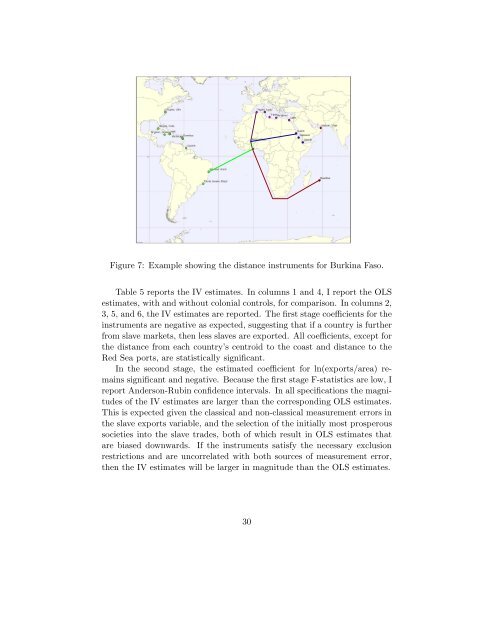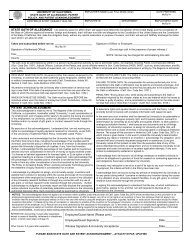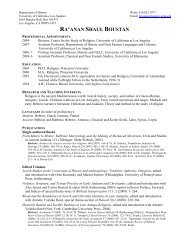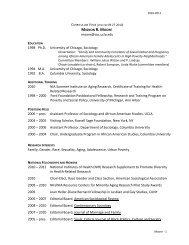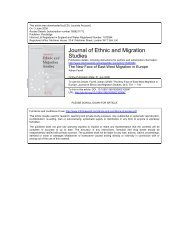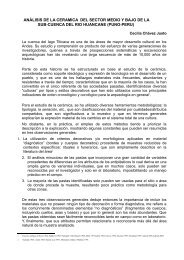The Long-Term Effects of Africa's Slave Trades - Social Sciences ...
The Long-Term Effects of Africa's Slave Trades - Social Sciences ...
The Long-Term Effects of Africa's Slave Trades - Social Sciences ...
Create successful ePaper yourself
Turn your PDF publications into a flip-book with our unique Google optimized e-Paper software.
Figure 7: Example showing the distance instruments for Burkina Faso.<br />
Table 5 reports the IV estimates. In columns 1 and 4, I report the OLS<br />
estimates, with and without colonial controls, for comparison. In columns 2,<br />
3, 5, and 6, the IV estimates are reported. <strong>The</strong> first stage coefficients for the<br />
instruments are negative as expected, suggesting that if a country is further<br />
from slave markets, then less slaves are exported. All coefficients, except for<br />
the distance from each country’s centroid to the coast and distance to the<br />
Red Sea ports, are statistically significant.<br />
In the second stage, the estimated coefficient for ln(exports/area) remains<br />
significant and negative. Because the first stage F-statistics are low, I<br />
report Anderson-Rubin confidence intervals. In all specifications the magnitudes<br />
<strong>of</strong> the IV estimates are larger than the corresponding OLS estimates.<br />
This is expected given the classical and non-classical measurement errors in<br />
the slave exports variable, and the selection <strong>of</strong> the initially most prosperous<br />
societies into the slave trades, both <strong>of</strong> which result in OLS estimates that<br />
are biased downwards. If the instruments satisfy the necessary exclusion<br />
restrictions and are uncorrelated with both sources <strong>of</strong> measurement error,<br />
then the IV estimates will be larger in magnitude than the OLS estimates.<br />
30


